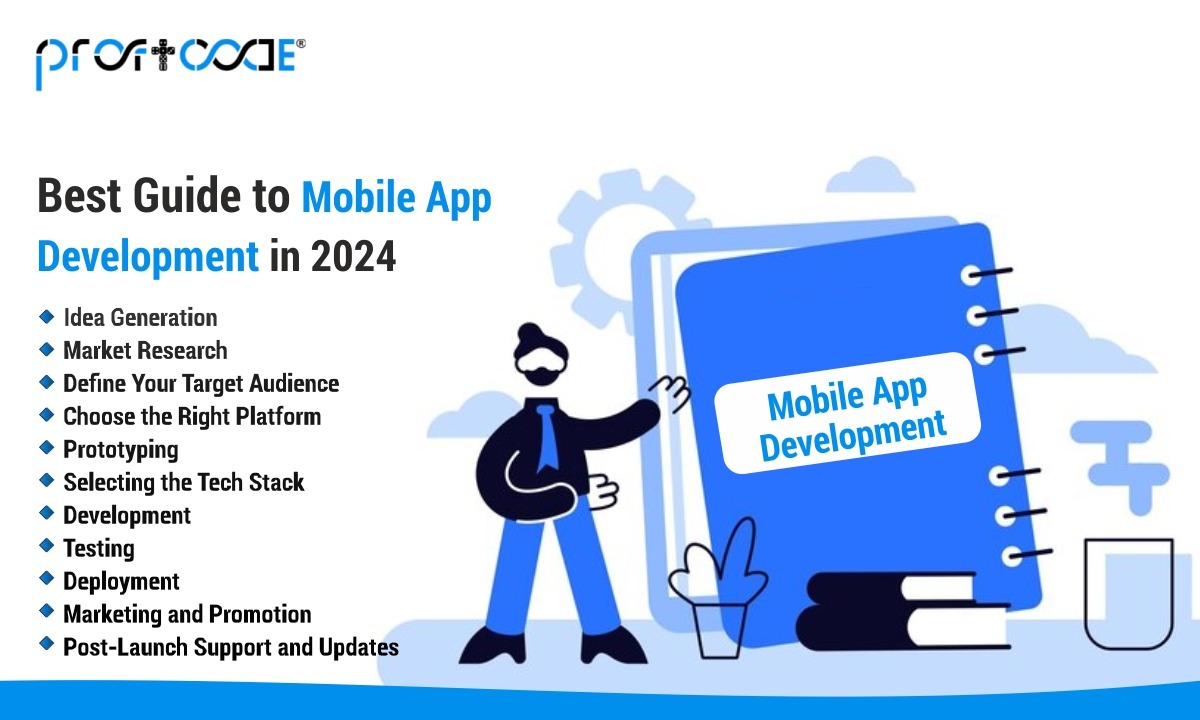In the landscape of technology, mobile applications have become an integral part of our daily lives. With the proliferation of smartphones and the ever-expanding app ecosystem, the demand for innovative and user-friendly mobile apps continues to soar. Whether you’re an aspiring app developer or a seasoned IT professional, this comprehensive guide aims to provide you with a roadmap to navigate the intricacies of mobile app development in 2024.
1. Idea Generation
The journey of developing a successful mobile app begins with a compelling idea. Consider the problems users face, explore market trends, and brainstorm innovative solutions. Identify a niche or a gap in the market that your app can fill. Validate your idea by conducting thorough market research and ensuring there is a demand for the solution your app aims to provide.
2. Market Research
In 2024, market research remains a cornerstone of successful app development. Dive deep into your target market, understanding user demographics, preferences, and behaviors. Analyze existing apps in your niche, study user reviews, and identify potential competitors. This step is crucial for refining your concept and ensuring that your app addresses a genuine need in the market.
3. Define Your Target Audience
Clearly define your target audience based on the nature of your app. Understand their pain points, preferences, and expectations. Tailor your app’s features, design, and functionality to cater to the specific needs of your target users. A user-centric approach will enhance the overall success and adoption of your mobile app.
4. Choose the Right Platform
The choice between developing for iOS, Android, or both depends on your target audience and business goals. Consider factors such as user base, device fragmentation, and revenue models. Native, hybrid, or web app development each has its advantages; make an informed decision that aligns with your resources and project requirements.
5. Wireframing and Prototyping
Before diving into development, create wireframes and prototypes to visualize the user interface and user experience. Tools like Sketch, Figma, or Adobe XD can aid in this process. Engage with potential users to gather feedback on the design, ensuring that the app’s structure aligns with user expectations and usability standards.
6. Selecting the Tech Stack
Choose the right technology stack based on your app’s requirements. Consider factors like scalability, performance, and development speed. Popular frameworks like React Native, Flutter, or Xamarin have gained prominence for cross-platform development, while Swift (iOS) and Kotlin (Android) are preferred for native development.
7. Development
The development phase involves coding, testing, and iteration. Whether you’re coding in-house or outsourcing development, establish clear communication channels. Break down the development process into sprints, allowing for regular testing and adjustments. Follow best coding practices, conduct code reviews, and ensure the development team is aligned with the project objectives.
8. Testing
Rigorous testing is crucial to identify and address bugs, ensuring a smooth user experience. Conduct functional, usability, security, and performance testing across different devices and operating systems. Implement continuous testing practices to catch and rectify issues early in the development cycle.
9. Deployment
Once testing is complete, it’s time to deploy your app to the chosen app stores. Adhere to the guidelines of platforms like Google Play Store and Apple App Store to ensure compliance. Optimize your app store listing with compelling visuals, a well-crafted description, and relevant keywords to enhance discoverability.
10. Marketing and Promotion
Develop a robust marketing strategy to generate awareness and drive downloads. Social media, content marketing, and influencer partnerships help you reach your target audience. Implement App Store Optimization (ASO) strategies to improve your app’s visibility and ranking in app stores.
11. Post-Launch Support and Updates
The journey doesn’t end with the app launch. Provide ongoing support, address user feedback promptly, and release regular updates to enhance features, fix bugs, and stay ahead of the competition. Encourage user engagement through feedback channels, emails, and social media to foster a sense of community around your app.
Conclusion
Developing a mobile app in 2024 is a multifaceted process that demands careful planning, technical expertise, and adaptability to market trends. By following these steps, you can increase the likelihood of creating a successful and impactful mobile application. Innovation, user experience, and effective marketing are key components of a thriving app in today’s competitive landscape. Embrace the opportunities, stay agile, and embark on a journey that could transform your app idea into a digital reality.






